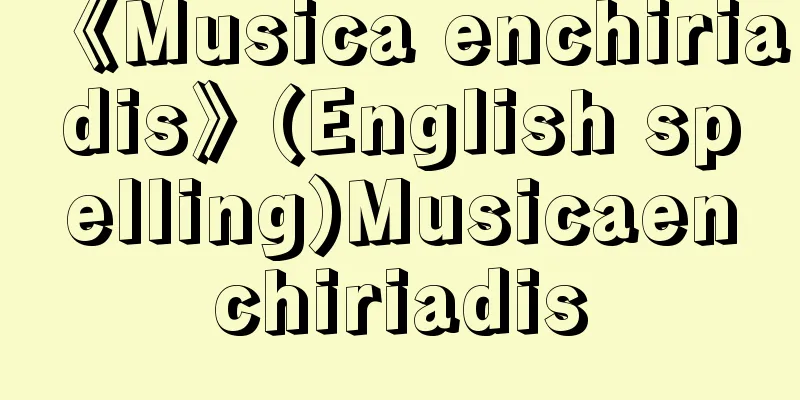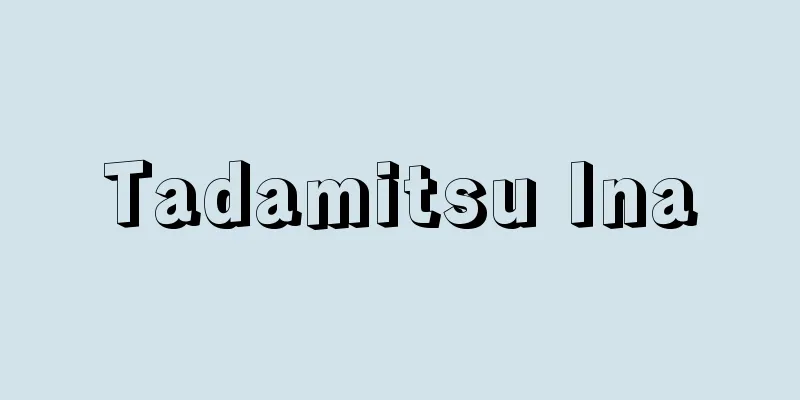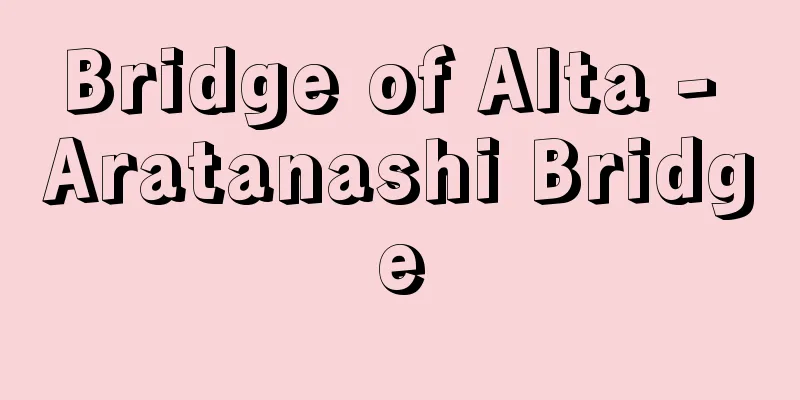Military education - Guntaikyoiku

|
A general term for education and training given to soldiers and their various units that make up the military. The ultimate goal is to maintain and improve the military's overall combat capability, and in modern military, it has become more organized and systematic. Military education can usually be divided into narrowly defined military education, which trains various units and their members, and school education, which aims to train officers and provide specialized skills education. Furthermore, some of the functions of military education may be performed by general educational institutions outside the military or by various organizations and groups. Prewar Japanese society is a typical example. Military education is an important element that directly affects the military's combat capability, so all countries' militaries attach great importance to it and establish a governing body for military education to guide and supervise it. However, the style and content of military education are not uniform, as they are strongly influenced by the history and traditions of the military of each country, the state of the political system and national goals of the country, the level of productivity, and cultural and social characteristics of the country. Generally speaking, there are two types of modern military forces: mass militaries, which conscript a large number of soldiers from a broad range of the population and provide them with a relatively short period of training, and elite militaries, which are mainly made up of professional soldiers and are well trained. The content of military education differs depending on which type is adopted. In recent years, the transformation of the weapon system has had a major impact on military education. That is, as shown by the emergence of nuclear weapons and missiles, the dramatic improvement in the quality of conventional weapons, and the mechanization of the military itself, the entire weapon system is supported by cutting-edge science and technology, and soldiers themselves are now required to receive highly specialized technical education, which has made military education more and more complex. This trend is likely to accelerate in the future. The purpose of military education is not limited to maintaining and improving military capabilities in the narrow sense, but also to have soldiers, especially ordinary soldiers, submit to the military order and cultivate loyalty to the military and the nation. The democratic consciousness fostered in the history since the civil revolution has always tended to clash with the military order governed by strict discipline and command-and-obedience relationships, so an important issue for military education is how to incorporate ordinary citizens who have acquired such a consciousness into the military order. In the case of the prewar Japanese military, this type of education was called spiritual education and was highly valued. Generally speaking, military education has responded to the above-mentioned objective demands by destroying or altering the values cultivated in civil society. The content of military education also has great political significance. In cases where military education is isolated from the accepted ideas of civil society and promotes extreme nationalism or militarism, the military itself has taken on a strong political tendency, and has engaged in independent political activities independent of the control of the government or parliament, and there have been many historical examples of such actions sometimes resorting to extreme measures such as coups. In order to realize the idea of civilian control, which establishes the principle of the superiority of politics over the military and political control of the military, the issue of how the government, parliament, and even the people should control the content of military education remains an important and practical issue. [Yoshida Yutaka] Military education in prewar JapanWhen the Meiji government was first established, it had no military power of its own apart from the Goshinpei and Chindaihei, and as these military powers were based on the soldiers of each domain, there was a severe lack of uniformity in equipment and training. For this reason, the unification of military systems was strongly promoted, following the example of France (later Prussia) in the case of the Army and the United Kingdom in the case of the Navy. Due to these circumstances, even in the field of military education, there was not necessarily an original education system or philosophy at the beginning, and many of the Codes and Ordinances were merely imitations of France and other countries. However, as the construction of military forces directly under the control of the central government progressed, the system of military education was gradually improved. In the case of the Army, the Inspectorate General was established in 1887 (Meiji 20) as the central governing body for military education, with the task of "planning the uniformity of the Army's military training". It was then abolished in 1898 and the Inspectorate General of Education was established. At this stage, the Inspector General of Education, who was the head of the Inspectorate General of Education, was under the jurisdiction of the Minister of the Army. Furthermore, in 1900 (Meiji 33), the Inspector General of Education Ordinance was revised to make the Inspector General of Education directly subordinate to the Emperor, and he, together with the Minister of the Army and the Chief of the General Staff, came to be known as the Three Chiefs of the Army. This system continued until Japan was defeated in the war. In the case of the Navy, the Education Headquarters, the governing body for military education, was established within the Ministry of the Navy in 1900, and the Education Headquarters was abolished in 1923 (Taisho 12) and a new Education Bureau was established. In the case of the Army, the central governing body for education was directly subordinate to the Emperor, whereas in the Navy, it was placed under the jurisdiction of the Minister of the Navy, which was a difference. On the other hand, in conjunction with this organizational development, the content of military education itself gradually came to be supported by Japan's unique ideology. In 1882 (Meiji 15), the "Imperial Rescript to Military Personnel" (Imperial Rescript to Military Personnel) was issued, and the basic spirit of military education was established. In other words, this Imperial Rescript made it clear that the authority to command and lead the military belonged to the Emperor himself, positioned military personnel as the Emperor's "trusted hands," and furthermore, clarified the direction of maintaining and strengthening order within the military through the Emperor's authority, stating that the orders of superior officers were the Emperor's own orders. From then on, the cultivation of loyalty to the Emperor became the cornerstone of Japanese military education. In particular, this tendency was further promoted during the expansion of foreign wars from the Manchurian Incident to the Second Sino-Japanese War and the Pacific War, and an extraordinary emphasis was placed on the idea of the military being "the Emperor's army." In 1934 (Showa 9), the Army Internal Affairs Manual was revised with the aim of "thoroughly instilling Imperial Army consciousness," and in 1941, the "Senjinkun," a battlefield version of the Imperial Rescript to Soldiers and Sailors, was issued in order to "promote Imperial Army morality." Furthermore, in terms of military education, the period following the Russo-Japanese War marked a major turning point. In particular, the Army underwent drastic revisions to various military codes between 1908 (Meiji 41) and 1914 (Taisho 3), and an ideology unique to the Japanese military was systematically established. Its characteristics included a strong emphasis on spiritualism, such as an "aggressive spirit" and "confidence in certain victory," a uniform formalism that "seeks metaphysical uniformity through the uniformity of external appearances," and a familial ideology that likened the relationship of rulers and subordinates within the military to that of a family. In addition, both the Army and Navy established various military schools to provide the necessary education for school education in the military. In the case of the Army, the Army Cadet School was established in 1872 (Meiji 5) to provide the necessary education to those who would become officers, and in 1874 the Army Officers Academy was established to train officers. Furthermore, in 1883, the Army War College was opened with the aim of providing officers with advanced military training. Among army officers, those who completed the educational course of Cadet School → Officers Academy → Army War College became elite officers and occupied important positions in the Ministry of the Army and the General Staff, gradually gaining real power in the military. In addition, as a result of the large-scale expansion of the military after the Sino-Japanese War, a large number of junior officers were needed, and the Reserve Officers Academy was established to train them. To train non-commissioned officers, the Training Corps was established in the early Meiji period, and was abolished in 1899. However, a new training school was established in the Showa period. In addition, the Army had various schools for training in specialized skills, such as the Infantry School, Field Heavy Artillery School, Heavy Artillery School, Engineering School, Toyama School (for training in gymnastics and swordsmanship), Communications School, Driving School, Flying School, Accounting School, Engineering School, Military Medical School, Veterinary School, and Military Police Training School. On the other hand, in the case of the Navy, the Naval Academy was established in 1876 (Meiji 9) to train officers, and the Naval War College was established in 1888. Like the Army War College, the Naval War College was an institution for training elite officers, and its graduates occupied important positions in the Navy. Other schools for training specialized skills in the Navy included the Engineering School, Military Medical School, Gunnery School, Torpedo School, Communications School, Diving School, and Mechanical Engineering School. In the case of Japanese military education, some of the functions of military education in the broad sense were assumed by various institutions and groups in the general public outside the military, and the entire society was reorganized as a place of preliminary education prior to military education, which was a notable feature. In terms of school education, the revision of the conscription law in 1889 (Meiji 22) made it compulsory for graduates of normal schools who were elementary school teachers to serve six weeks in the military, and this six-week active duty system was used as a lever to promote the militarization of school education. This system later became a one-year active duty system and a short-term active duty system. Furthermore, the revision of the Elementary School Act in 1903 (Meiji 36) established a national textbook system, and military values were instilled in students through national textbooks. In 1925 (Taisho 14), the Order for Assignment of Army Active Duty Officers to Schools was promulgated, and military training began in all schools from secondary schools onwards. Outside of school education, a Youth Training Center was established in 1951 to provide militaristic education to young men aged 16 to 20 who had completed compulsory education. In 1935, this Youth Training Center merged with a Vocational Supplementary School to become a Youth School, and in 1939, as the Sino-Japanese War continued, compulsory Youth School attendance for men was made effective. It can be said that it was only through this series of measures that military education in the narrow sense of the word was able to function within the military and strict military discipline was maintained. [Yoshida Yutaka] Ushigome-ku Ichigaya Honmura-cho (present-day Shinjuku-ku Ichigaya Honmura-cho, Tokyo). "Illustrated Guide to Famous Places in Tokyo" (1912, Meiji 45), National Diet Library . Army Central Cadet School Honmuracho, Ushigome Ward (currently Honmuracho, Shinjuku Ward, Tokyo). "Photo Album of the Latest Famous Places of Tokyo" (1909, Meiji 42), National Diet Library . Military Academy The school building was located in Aoyama Kitamachi, Akasaka Ward (currently Kita-Aoyama, Minato Ward, Tokyo). "Tokyo Prefecture Famous Places Illustrations" (1912, Meiji 45) National Diet Library Army War College Source: Shogakukan Encyclopedia Nipponica About Encyclopedia Nipponica Information | Legend |
|
軍隊を構成するそれぞれの軍人およびその組織体たる各種部隊などに対して実施される教育、訓練などの総称。最終的には軍隊の総合的戦闘能力を維持・向上させることを目的とするものであり、近代軍隊において、より組織的・体系的なものとなった。通常、各種の部隊とその構成員を練成する狭義の軍隊教育と、幹部の養成や専門的技能教育を目的とする学校教育とに区分することができ、さらには、こうした軍隊教育の一部の機能を、軍隊外の一般教育機関や種々の組織・団体が担っている場合もある。戦前期の日本社会はその典型的事例であろう。軍隊教育は、軍の戦闘能力に直接的な影響を与える重要な要素であるため、いずれの国の軍隊もこれを重視し、軍隊教育のための統轄機関を設置して指導・監督にあたらせているが、軍隊教育の様式・内容には、当該国の軍隊の歴史と伝統、当該国の政治体制のあり方や国家目標、生産力の水準や文化的・社会的特質などが色濃く反映しており一様でない。一般に近代軍隊には、広範な国民のなかから多数の兵士を徴集し、これに比較的短期間の教育を施す大衆軍と、職業的軍人を中心とする、よく訓練された精鋭軍との二つのタイプが存在するが、このいずれを採用するかによっても軍隊教育の内容は異なったものとなる。また近年は、兵器体系の変貌(へんぼう)が軍隊教育に大きな影響を与えている。すなわち、核兵器やミサイルの出現、通常兵器の飛躍的な質的改善、軍隊自体の機械化などに示されるように、兵器体系全体が最先端の科学技術に支えられたものとなっているため、軍人自身にも高度の専門技術教育が必要とされるに至り、軍隊教育は、いよいよその複雑さを増しているのである。今後、こうした傾向は、ますます加速されることとなろう。 なお、軍隊教育の目的は、狭義の軍事的能力の維持・向上にとどまるものではなく、軍人、とりわけ一般兵士を軍隊内秩序に服従させ、軍隊と国家に対する忠誠心を培養することをもう一つの重要な柱としている。市民革命以降の歴史のなかではぐくまれた民主主義的意識と、厳格な規律と命令‐服従関係によって支配されている軍隊内秩序とはつねに衝突する傾向を有しているため、そのような意識を身につけた一般国民を、軍隊内秩序のなかにいかにして組み入れてゆくかが軍隊教育の重要な課題とならざるをえないのである。戦前の日本軍隊の場合、こうした教育は精神教育とよばれ、きわめて重視された。一般的にいえば、軍隊教育は、市民社会のなかで培われてきた価値観を破壊し、あるいは変質させることによって、前記のような客観的要請にこたえてきたのである。また、軍隊教育の内容は政治的にも大きな意味を有している。市民社会の通念から隔絶し、極端な国家主義や軍国主義などを鼓吹するような軍隊教育が行われている場合には、その軍隊自体が特定の政治的傾向を強く帯び、政府や議会などの統制を離れて独自の政治的活動を展開し、ときにはクーデターという非常手段に訴えた歴史的事例も少なくない。政治の軍事に対する優位、政治による軍事の統制を原則化したシビリアン・コントロールの理念を実現してゆくうえで、軍隊教育の内容を政府や議会、さらには国民がいかにして統制するのかという問題は、依然として重要な現実的意味をもっているものといえるであろう。 [吉田 裕] 戦前日本の軍隊教育成立当初の明治政府は御親兵や鎮台兵以外には固有の軍事力を有せず、それらの軍事力も各藩の藩兵を基礎にしていたため、装備や訓練の統一性を甚だしく欠いていた。このため、陸軍の場合はフランス(のちにプロイセン)に、海軍の場合はイギリスに倣って兵制の統一が強力に進められた。こうした事情のため、軍隊教育の分野にあっても、当初は独自の教育体系や理念がかならずしも存在したわけではなく、典範令の類もフランスなどの模倣にすぎないものが少なくなかったのである。しかし、中央政府直轄の軍事力の建設が進むにつれて軍隊教育の体系もしだいに整備されてゆく。陸軍の場合、1887年(明治20)には軍隊教育の中央統轄機関として、「陸軍軍隊練成ノ斉一ヲ企画」する監軍部が設置され、続いて98年には監軍部が廃止されて新たに教育総監部が設置される。この段階では、教育総監部の長官たる教育総監は、陸軍大臣の管轄に属していた。さらに1900年(明治33)には、教育総監部条例の改正によって教育総監は天皇に直隷することとなり、陸軍大臣、参謀総長と鼎立(ていりつ)して陸軍三長官と称せられるようになるのである。以後、敗戦に至るまでこの体制が続いた。 海軍の場合には、1900年に、軍隊教育の統轄機関たる教育本部が海軍省に新設され、さらに23年(大正12)には教育本部が廃止されて新たに教育局が設置されている。陸軍の場合、教育の中央統轄機関が天皇に直隷していたのに対し、海軍ではこれが海軍大臣の管轄下に置かれている点が異なっていた。 他方、こうした機構整備と相まって、軍隊教育の内容自体も、しだいに日本独自のイデオロギーに支えられたものとなってゆく。1882年(明治15)には「陸海軍軍人に賜はりたる勅諭」(軍人勅諭)が公布され、軍隊教育の基本精神が確立される。すなわち、この勅諭は、軍隊に対する指揮・統率の権限が天皇自身に属することを明らかにし、軍人を天皇の「股肱(ここう)」として位置づけ、さらに、上官の命令は天皇自身の命令であるとして、天皇の権威により軍隊内の秩序を維持・強化しようとする方向性を明確にしたのである。以後、天皇に対する忠誠心の培養が日本の軍隊教育の要(かなめ)をなすに至る。とくに、満州事変から日中戦争、太平洋戦争にかけての対外戦争の拡大過程において、こうした傾向はますます助長され、「天皇の軍隊」たることが異常に強調されてゆくこととなる。1934年(昭和9)には「皇軍意識ヲ徹底セシム」という立場から軍隊内務書が改正され、41年には「皇軍道義の高揚」を図るため軍人勅諭の戦場版ともいうべき「戦陣訓」が布達されている。 さらに軍隊教育の面では、日露戦争後の時期が一つの大きな画期となった。とりわけ陸軍では、1908年(明治41)から14年(大正3)にかけて各種の典範令が抜本的に改正され、日本軍隊独自のイデオロギーが体系的に確立されるのである。その特徴は、「攻撃精神」「必勝ノ信念」などの精神主義の著しい強調、「外形ノ画一ニ依(よ)リ形而上(けいじじょう)ノ斉一ヲ求ムル」画一的形式主義、軍隊内の支配‐被支配関係を家族関係になぞらえる家族主義的イデオロギーなどである。 また、軍隊教育のなかの学校教育については、陸海軍ともに各種の軍学校が設置され、必要な教育を施していた。陸軍の場合、1872年(明治5)に、将校となるべき者に所要の教育を施す陸軍幼年学校が、74年には、将校養成のための陸軍士官学校が設立されており、さらに83年には、将校に高等用兵教育を施すことなどを目的にして陸軍大学校が開校されている。陸軍将校中、幼年学校→士官学校→陸軍大学校という教育コースを経た者は、エリート将校として陸軍省、参謀本部の要職を占め、しだいに軍の実権を握っていった。また、日中戦争以降の軍備大拡張に伴い、大量の下級将校が必要になってくると、その養成のために予備士官学校が設置されている。下士官の養成のためには、明治初年に教導団が設けられ、その後、99年には廃止されていたが、昭和期に入ると新たに教導学校が設置されている。そのほか陸軍には、各種の専門的技能教育のために、歩兵学校、野戦重砲兵学校、重砲兵学校、工兵学校、戸山学校(体操、剣術教育)、通信学校、自動車学校、飛行学校、経理学校、工科学校、軍医学校、獣医学校、憲兵練習所などがあった。他方、海軍の場合、1876年(明治9)に将校養成のため海軍兵学校が設立され、88年には海軍大学校が設立されている。陸軍大学校と同様、海軍大学校はエリート将校の養成機関であり、その卒業者が海軍の要職を占めた。そのほか海軍の専門的技能教育のための学校としては機関学校、軍医学校、砲術学校、水雷学校、通信学校、潜水学校、工機学校などがある。 なお、日本の軍隊教育の場合、広義の軍隊教育の機能の一部が、軍隊外の一般社会の諸機関、諸団体によって担われ、いわば社会全体が軍隊内教育に先だつ予備的教育の場として再編成されていたところに著しい特徴があった。学校教育の面では、1889年(明治22)の徴兵令改正によって、師範学校の卒業者で小学校の教職にある者には6週間の軍隊生活が義務づけられ、この六週間現役制度をてこに学校教育の軍国主義化が推進された。この制度はのちに1年現役制、短期現役制となる。さらに、1903年(明治36)には小学校令の改正により国定教科書制度が確立し、国定教科書を通じて軍事的価値観が生徒に注入されるようになるのである。また、25年(大正14)には陸軍現役将校学校配属令が公布され、中等学校以上の各学校における軍事教練が開始されている。学校教育以外の分野でも、26年には、義務教育終了後の16歳から20歳までの青年を対象とし、これに軍国主義教育を実施する青年訓練所が設置されている。この青年訓練所は、35年(昭和10)に実業補習学校と合併して青年学校となり、39年には日中戦争の長期化に伴い、男子の青年学校義務制が実施に移されるのである。こうした一連の措置によって初めて、軍隊内における狭義の軍隊教育がその機能を発揮し、厳格な軍紀が維持されたということができよう。 [吉田 裕] 牛込区市谷本村町(現在の東京都新宿区市谷本村町)。『東京府名勝図絵』(1912年〈明治45〉)国立国会図書館所蔵"> 陸軍中央幼年学校 牛込区市谷本村町(現在の東京都新宿区市谷本村町)。『最新東京名所写真帖』(1909年〈明治42〉)国立国会図書館所蔵"> 陸軍士官学校 赤坂区青山北町(現在の東京都港区北青山)にあった校舎。『東京府名勝図絵』(1912年〈明治45〉)国立国会図書館所蔵"> 陸軍大学校 出典 小学館 日本大百科全書(ニッポニカ)日本大百科全書(ニッポニカ)について 情報 | 凡例 |
<<: Kundalini (English spelling)
>>: The Record of the View of the Palace of the Emperor - Kundai Kansochoki
Recommend
Eye ointment
…Medicines used to treat eye diseases. Eye drops ...
Nguyen Hue (English spelling)
1752‐92 Leader of the Tay Son Revolution that aros...
Reichsritter
...The name Viscount comes from vicecomes, an off...
Item (English)
An item. Even if the size or color is different, i...
Tinamou (English spelling)
A general term for birds of the Tinamidae family i...
Rubus phoenicolasius (English spelling) Rubus phoenicolasius
… [Matsui Jin]. … *Some of the terminology that m...
Sabah - Fat'Alī Khān abā (English spelling)
Persian poet. Born in Kashan. He first served the...
Gazette National - Gazette National
…The newspaper was founded by CJ Panecook in Nove...
DGB - DeGeB
German Trade Union Confederation ( Deutscher Gewer...
Sheep botfly (sheep fly)
An insect of the Diptera family, Ophididae. The la...
Kuḍamura (English spelling) kudamura
…Terrestrial animals are generally cattle, sheep,...
Aspergillus oryzae (English spelling) Koji‐fungus
A general term for fungi of the genus Aspergillus....
Shotaro Ikegai
Year of death: July 28, 1934 Year of birth: Octobe...
Deterioration - Rekka (English spelling)
Damage to materials caused by physical, chemical, ...
Ypres - Ieper (English spelling)
Ypres is an industrial city in the northwest of B...

![Uwa [town] - Wow](/upload/images/67cb02440d6e3.webp)







